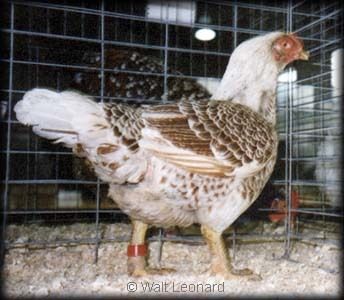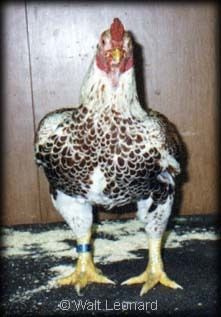Big Medicine, I'm not experienced enough to know what they are, and no idea what people are getting those that they call paints from, but guessing some must just be the result of a cock with one copy of dominant white bred to my DCs. I have never seen dominant white hatch such a silvery color, and don;t understand why I'm not seeing more red bleed. I guess I'll grow them out and see what happens. I'm plumb ignorant about the breeding of WC, and was only told a couple of days ago that many have used jubilee and wlr to breed with whites., A breeder, that was kind enough to share some of his experience with me, told me his original Herring cock had a couple of black feathers; and also just recently been told, by the man that sold me my cock, that he was bred from the birds Herring had left when he passed and some bought from Herring many years earlier.
Also, I've never owned a black breed with yellow legs. The black chick that hatched a couple of weeks ago has some of the black pigment broken with yellow now. The whites and darks are separated now, so if all go well I'll know for certain which females they came from three weeks from now.
P.S. I can't rule out one of their parents being a silkie cross, but most of my Cornish are a little harder feathered than most silkies.

Also, I've never owned a black breed with yellow legs. The black chick that hatched a couple of weeks ago has some of the black pigment broken with yellow now. The whites and darks are separated now, so if all go well I'll know for certain which females they came from three weeks from now.
P.S. I can't rule out one of their parents being a silkie cross, but most of my Cornish are a little harder feathered than most silkies.

Last edited:







